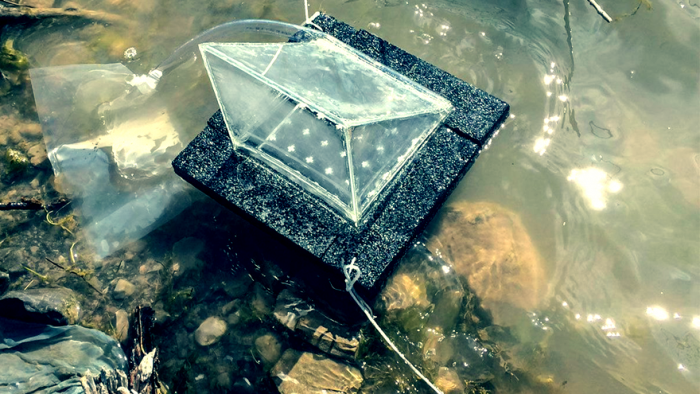
Students at the University of Buffalo, New York, have devised an economically viable system to clean water for personal use. It is a water purifying design, roughly the size of a miniature refrigerator, that is able to turn saltwater or stagnant, contaminated pools into pristine water.
The idea behind the design was recently published in the journal of Global Challenges, a multidisciplinary document that records innovative attempts at tackling humanity’s major problems. What sets this water purifier apart from conventional filtering systems is its two-pronged approach to efficiency. Firstly, it uses inexpensive, easily-sourced materials. Secondly, it takes advantage of abundant sunlight.
The water purifier uses a process called “solar vapour generation”. Its design hinges on one important material, carbon-coated paper and its maximised capacity for absorption. As sunlight shines into the main compartment of the purifier, contaminated water starts to evaporate.
As trapped heat turns the liquid into vapour, unwanted elements and impurities are left behind as dried particles. The trapped vapour is then transferred naturally to a different compartment of the design. As the vapour cools down again, it unifies into liquid form – sans salt particles or bacteria.
The lead researcher on the project, Qiaoqiang Gan told the University of Buffalo’s news office about the twofold design.
“Using extremely low-cost materials, we have been able to create a system that makes near maximum use of the solar energy during evaporation. At the same time, we are minimising the amount of heat loss during this process,” Gan explained.
The purifier is made of expanded polystyrene, a common variant of plastic often used for its insulation and floatation properties. Inside, a piece of spongy paper that has been dipped in black carbon (as this retains heat easily) facilitates the simple vaporisation process.
Co-author to the study of the water purifier, Zhejun Liu, emphasised the accessibility of this design, as it has the potential to become a commonplace appliance for vulnerable communities.
“The solar [purifier] we are developing would be ideal for small communities, allowing people to generate their own drinking water much like they generate their own power via solar panels on their house roof,” Lui said.






